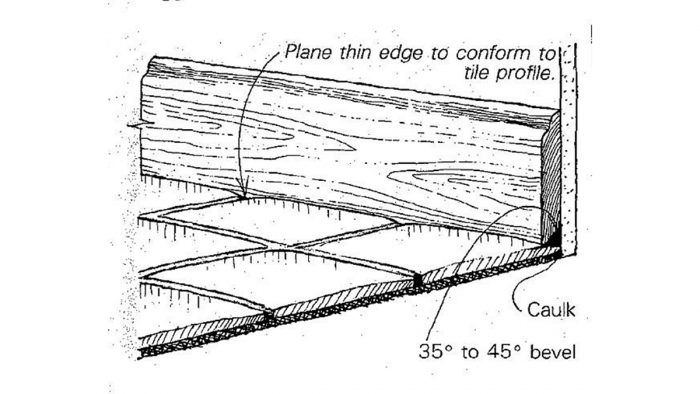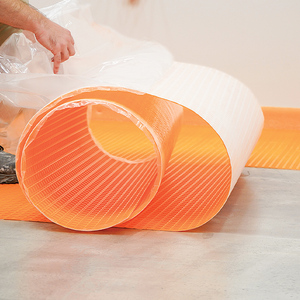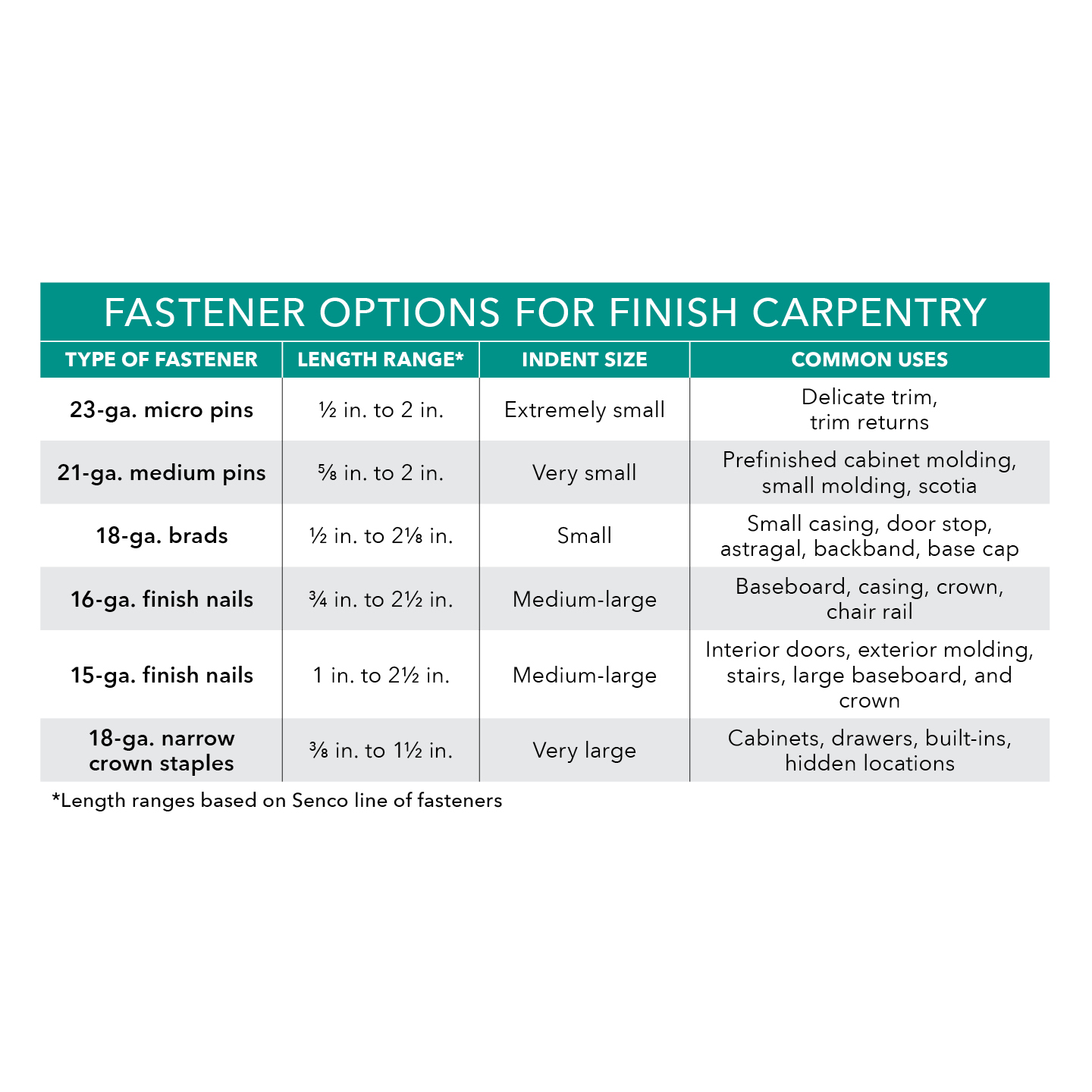
The cost of tile cove base is surprisingly high—about $3 to $4 per running foot. On the other hand, scribing a wooden baseboard to a tile floor is very time-consuming. The method I use to install wooden baseboards gives me a water-resistant joint where tile and wood meet, and a fit that looks painstakingly scribed, but isn’t.
First, I bevel the back of my baseboard material as shown in the drawing. The thin edge on the front of the baseboard will usually conform to a well-laid tile floor with a few taps of a hammer — no scribing is necessary. Be sure to use a piece of scrap wood to cushion the hammer blows.
After dry-fitting, I tack the baseboards in place. As I remove them one at a time, I carefully lay a bead of good caulking compound in the void behind the bevel. I like Geocel caulk. Any caulk that oozes out can be cut away after it sets up. Prefinishing the baseboards saves time, and usually gives better results than trying to paint or varnish them in place.
—M. Felix Marti, Monroe, OR
Edited and illustrated by Charles Miller
From Fine Homebuilding #14






























View Comments
Excellent Idea Mr. Marti! I'll use it Myself the Next Time I Do a Job like this.
FHB #14 ? Does anyone even sell Geocell anymore? Still, the tip still probably could work.
I remember being proudly shown by a relative how his carpenter had scribed the baseboards to a stone floor in his new home. I valued our relationship and so restrained myself from telling him how absolutely terrible it looked. One's eye is immediately drawn to the uneven edge.
...but I'd like to know who is splashing water around in a residential setting such that a sealed joint is required.
I agree that fitted baseboards can be ugly and are too much work, but sealing that line between the floor and wall is valuable. Stuff happens. I had a shower drain get clogged with hair and overflow onto the bathroom floor. You don't want water to get into the walls. It will take forever (or never) to dry.